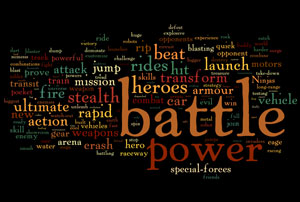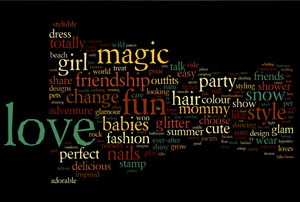|
|
|||||
Word Clouds You may have seen these jumbles of key words on Flickr and other sites and wondered what they were all about. A word cloud is a graphic created from the text of a web site or from a list of of supplied words. For example, I created this image from the article titles in the Urbach Letter Back Issue Archive. The more frequently a word or phrase appears in a list, the larger and bolder it's rendered in the graphic. There are more sophisticated implementations, but the general concept is that frequency correlates with importance. Word clouds are surprisingly easy to create using online tools like wordle.net. Once you paste in your word list, the basic cloud is presented, and then you can tweak the layout, typeface, and colors. Can you think of some applications for your own use? Perhaps a report or book cover? Something to put on the back of your business card that'll help communicate ALL the things you do? How about a unique or highly personalized greeting or holiday card? There are lots of clever examples in the Wordle Gallery, but here is a pair I found of particular interest:
No surprise about the gender stereotyping that occurs in kid marketing, but seeing the terms bolded in a word cloud really drives home the key messaging differences. At this level (expensive TV advertising by major toy companies), everything is response tested. The reason these terms have prominence is because they resonate with the target market. |



